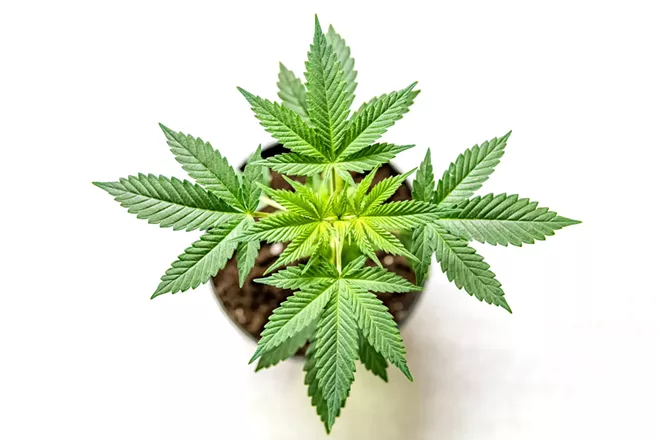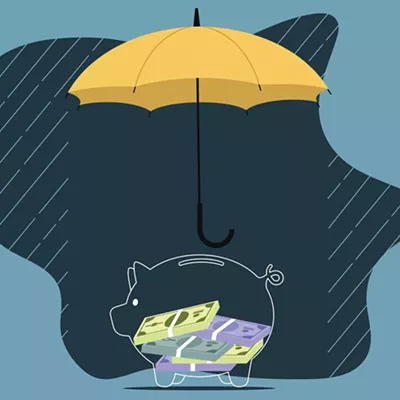As the hashtag #recessioncore transforms online trends, there's an increasing focus on home-growing our daily needs. Eggs? Get a chicken. Grow a tomato plant, and DIY your own salsa. Make bread from scratch.
But how do you DIY your lil' smoking habit? Washington state is chewing on House Bill 1614 to make growing personal-use cannabis legal for those 21 and older. (Registered medical patients can legally grow up to 15 plants.) Don't get too excited — the bill hasn't passed yet. And it looks like it won't. But until it's officially dead, we'll keep hope alive. While you're waiting for the government to move, get hyped with the various stages of the seed-to-smoke process.
GET THE SETUP
Your future baby weed needs four things to exist — a cozy little house, sunshine, air and food. The DIY setup can be as easy as buying a kit online, bundling the equipment you'll need to nurture your plants. Make space for a grow tent, preferably with outdoor ventilation. By growing your plants in a tent, you'll be able to precisely control temperature, humidity and light.Skeptical? Try using your grow setup to parent something innocuous indoors (tomato plus jalapeño equals salsa). Once you get the hang of caring for plants indoors, you can enjoy chips and dip until you can start your weed seeds. When starting seeds, double-check the limits that HB 1614 or some other future state law imposes. You'll only be allowed to grow a small number of plants for personal use.
Set expectations — growing your own requires an investment of time. End-to-end, you'll be plant parenting for three to eight months. During this time, you'll be adjusting light exposure to move your plants through the various growth phases.
GROWTH PHASES
During germination, your seeds need a delicate balance of water, warmth and temperature to spring from their shells.
When your seed has sprouted, the plant enters the vegetative stage. Your plant will start doing plant things — photosynthesis, growth and strengthening.
You can partially control how long your plants remain in the vegetative stage. This allows you to control how big the plants grow (important for mini-indoor box cultivation) or how hearty they get before introducing them outdoors (where you can grow a larger outdoor tree).
Obviously, blooming is the payoff of the plant's process. Indoors, you'll adjust light duration to trigger this step. During this stage, you'll start to see your strain's unique characteristics and aroma. Keep those smells to yourself. If passed, HB 1614 requires that your farming "may not result in cannabis being readily smelled from a public place or the private property of another housing unit."
THE CURE
Congrats little farmer, you've grown your own! Let your bountiful harvest dry and cure — the two most critical phases of pot production. This final process can take several weeks to months, and you still need to pay attention.
First, dry your product to remove moisture. Next, cure the weed to continue breaking down chlorophyll. Don't rush either step — a low-and-slow approach will prevent mold and quality degradation.
In their essence, the drying and curing steps are another delicate tango of moisture and temperature. Just like fine wine, weed prefers low temperatures, dark rooms and low humidity.
Final warning: Your drying room will smell like weed.
DON'T BRAG ABOUT IT
While your buds are drying, fantasize about all the ways you can use it. Make some cookies. Infuse some butter. Be careful about bragging to your friends or throwing a bud-baby shower. Under the House bill, home-grown weed is for personal use only.
As you crush the #recessioncore trend, smoke a bowl as the world burns. You're well on your way to self-sufficiency no matter how the world turns. ♦
WANT MORE? CHECK OUT THESE BOOKS
CANNABIS GROWER'S HANDBOOK by Ed Rosenthal. The latest edition from the original grower with new tips on cultivation.
THE CANNABIS GROW BIBLE: THE DEFINITIVE GUIDE TO GROWING MARIJUANA FOR RECREATIONAL AND MEDICAL USE by Greg Green. Details are a-plenty in this book, which may be more helpful for experienced gardeners (of any variety).
THE SINSEMILLA TECHNIQUE by Kayo. The absolute classic guide for growing cannabis. First published in 1983, this book gets extra points for coming out in the thick of anti-cannabis sentiment. Plus, it's great for beginners.














